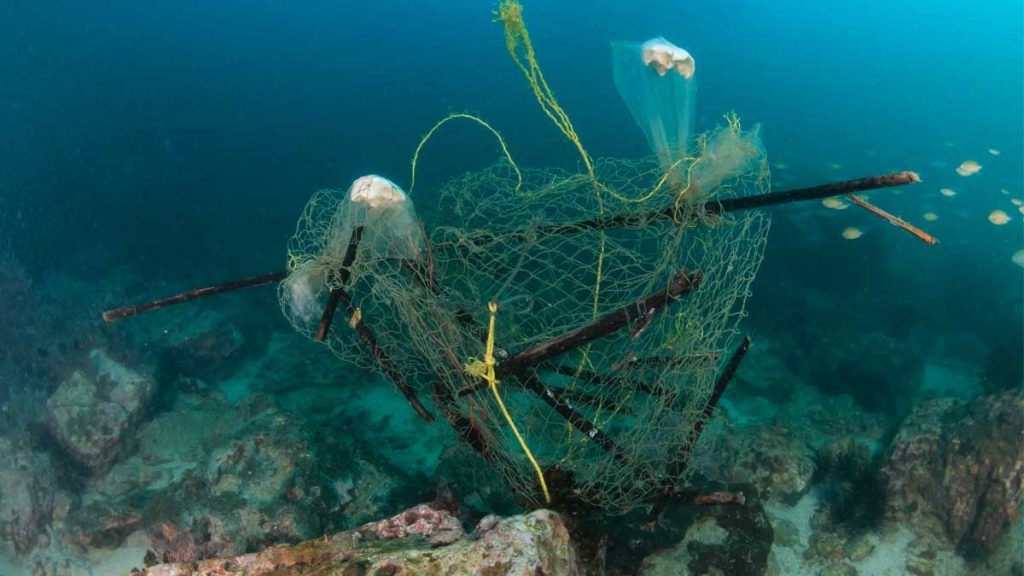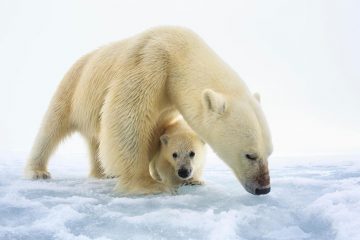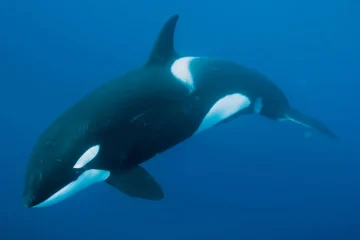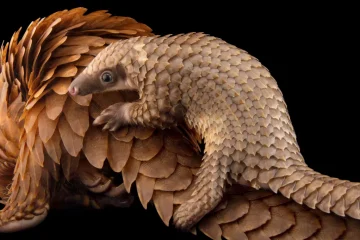If you are a non-vegetarian, I’m sure you enjoy seafood. Salmon, fish, or shrimp can be your favorite food. But have you ever thought about the process and contributors that take place before your favorite seafood arrives on your plate?
Aquaculture and Fishery
Aquaculture and fisheries (plural noun of term “fishery”) are terms in the same field but have different meanings.
Aquafarming, also known as aquaculture, is the cultivation or farming of aquatic organisms that involves the cultivation of freshwater or seawater populations under controlled or semi-natural conditions and is comparable to commercial fishing, or wild fish harvest.
The fishery is defined as the science of producing fish or other aquatic resources for the primary purpose of providing human food, as well as for other purposes such as ornamental fish, recreational fishing, and other fish products such as salmon and fish oil. It can be either an activity or an occupation, an industry, or a place for catching or rearing fish and other living organisms from their natural or man-made habitats to be consumed as seafood. Fisheries do harvest for values such as commercial, recreational, or self-consumption.
According to the definition of the United Nations Food and Agriculture Organization (UNFAO), a fishing unit is a unit determined by an authority or other body engaged in fish farming and/or harvesting. Typically, the unit contains terms such as involvement of people, species or type of fish, method of fishing, area of water or seabed, class of boats, and purpose of the activities.

Types of Fisheries
Types of fisheries can categorize into different levels. According to the type of aquatic habitat/place that uses to harvesting/fishing can differ as,
- Freshwater Fisheries – Fisheries which take place in freshwater such as rivers, lakes, and streams. Depending on salinity levels and water temperature, this environment is different from marine conditions.
- Coastal Fisheries – Fisheries which take place in coastal areas around the country. The major amount of local fish consumption in developing countries supply by the coastal fishing.
- High Seas Fisheries – The high seas lie beyond national jurisdiction and aquatic organisms there are caught by industrial fleets and are mainly Referral for high-end markets.
- Brackish Water Fisheries – Brackish water means the mixture of salt and fresh water. Mainly fishery in lagoons include to this type.
According to the expansion of industry, using method and equipment as well as purpose, capture fisheries can categorize into various types.
- Industrial fisheries – Fishery which is maintained by investing high capital, using large vessels and advanced techniques with fish finding navigational equipment. Such a fishing industry has a high production capacity and catch per unit is generally high.
- Small-scale Fisheries – Most often family owned and mainly depend on labour intensive. Use relatively small vessels/boats, little capital, low fuel consumption and non-advanced equipment usage. may be commercial or subsistence.
- Artisanal Fisheries – Mostly the same as small-scale industries providing local consumption or export, they frequently target the same resources as well. Can include ways ranging from making short fishing trips close to shore, hand collection on the beach, one person fishing on a canoe, to fishing by using trawlers and small vessels/seiners.
- Recreational (sport) Fisheries – Fishing for leisure and self-consumption or as a time pass.
- Commercial Fisheries – Fishery which sells the harvest in the market mainly for profit.
- Traditional Fisheries – The fishing industry was established by specialized communities a long time ago, usually in accordance with traditional laws and regulations. It reflects cultural characteristics and attitudes and can be strongly influenced by religious practices or social customs. Knowledge is transmitted from generation to generation through the words of mouth. They are usually small-scale.

Importance of Fisheries
Most of the developing countries and islands fisheries, contribute to covering a major amount of daily protein consumption in the community. Mainly industrial and small-scale fisheries have been provided jobs for 41 million people around the world. fish consumptions take a major place among the people due to the easy availability, low prices rather than other protein meals and provides many of the nutrients required for a healthy life. Compared to other food sectors, minimization of losses and ease of harvesting are the main reasons for people to turn to fisheries. Exportation of fish, ornamental fish, and fishery commodity productions, take a leading position in the economy of developing countries.
Fisheries in Sri Lanka
As an island In the Indian Ocean, Sri Lanka which is surrounded by warm and nutrient-filled coastal waters and rivers, streams, and lakes provides great opportunities for inland as well as coastal and deep-sea fisheries.
Marine fish production contributes nearly 90% of the total fish catch, of which the coastal fish catch is 60%. The rest is from deep-sea fish catching.
Sri Lanka has 12 main fishing harbors which give access to basins protected by breakwaters providing year-round safe approach and navigation, anchoring, and berthing for mainly inboard engine vessels.
The sector provides a livelihood for about 2 million people while making a greater contribution towards the GDP of the country. According to the Food Balance Sheet of the Department of Census and Statistics, fish contribute about 65 percent of the population’s animal-based protein intake.
The Ministry of fisheries collaborates with other organizations to provide many services and promotions to Improve the fisheries and the economic status of fishermen. There is a lagoon development program, Diyawara Piyasa fisheries housing scheme, a sanitary program, and a loan program. According to the department of fisheries and aquatic resources, they are mainly focusing on promoting environmentally friendly fishing methods. Accordingly, it is expected to provide technical assistance to fishermen to upgrade their boats and equipment so that they can switch to more sustainable harvesting methods. Sri Lankan Navy plays a leading role in protecting local fishermen and the country’s maritime boundaries.
Issues in the Fishing Industry
The most harmful fishing practices affecting the underwater world are,
- Overfishing – Fishing speed is faster than reproduction speed
- Bycatch – Accidental exposure of non-target species like coral, turtles, seabirds to extensive fishing mechanisms such as gillnets, and trawlers.
- Damage to the ocean floor by unsustainable fishing practises.
- Illegal Fishing – Unauthorized fishing, off-season fishing, failure to report capture information and use of illegal procedures and trapping methods.


Challenges in Fishery
- A lack of proper weather forecast makes it difficult to do fishing in adverse weather conditions such as high seas such as tsunamis and hurricane.
- A decrease in harvest due to overfishing, illegal fishing, oil leaks from ships.
- Adverse consequence of global warming, and declining fish stocks in the country due to fishermen in other countries crossing the borders, are the problems that are faced in the fishing industry.
World Fisheries Day
International Fisheries Day is celebrated annually on November 21st by the fishing community to focus on the sustainability of the fishing industry, the balance of the ecosystem, and the surrounding environment.
A forum for the World Fisheries Federation was established in 1997 and became known as the WFF (World Fisheries Forum), and it led to the adoption of sustainable measures to mark high development practices and policy guidelines for making the fishing industry a viable trading and commercial medium.
As the beginning of a new pattern in 1997, the first World Fisheries Day was celebrated on November 21st, 2015. On the same day, it was the grand opening of the International Fisherman’s organization was held in New Delhi.
In 2020, the theme of the fisheries day focused on “Social Responsibility in the Fisheries Value Chain”. The 2021 theme is still awaited and may hold the right blend of the fishing industry, nature, and environment, plus a greater focus on biodiversity.


Written By:
K. A. Kavindana Nirmani,
1st Year Undergraduate,
Biological Science Stream,
Faculty of Science,
University of Colombo.
References:
- What is Fisheries | IGI Global. (n.d.). IGI Global. https://www.igi-global.com/dictionary/cgiar-virtual-library-bridging-gap/11188
- UN Atlas of the Oceans: Subtopic. (n.d.). UN Atlas of the Oceans. http://www.oceansatlas.org/subtopic/en/c/1303/
- The importance of fisheries and aquaculture to development | WorldFish. (2018, October 19). World Fish.
https://www.worldfishcenter.org/publication/importance-fisheries-and-aquaculture-development - admin@watchinglanka.com (2020, July 30). Fishing Industry in Sri Lanka. Watching Lanka. https://www.watchinglanka.com/fishing-industry-in-sri-lanka/
- Open Farm. (n.d.). 5 Big Issues in the Fishing Industry and How You Can Help. https://openfarmpet.com/blogs/news/5-big-issues-in-the-fishing-industry-and-how-you-can-help
- Gupta, D. (2021, November 11). World Fisheries Day 2021: Know the Theme, Date, History and Significance. KRISHI JAGAN. https://krishijagran.com/animal-husbandry/world-fisheries-day-2021-know-the-theme-date-history-and-significance/
Image Courtesy:
- Title Image: https://bit.ly/30DTk4c
- 1st Content Image: https://bit.ly/3qTkNcP
- 2nd Content Image: https://bit.ly/3FBqZdz
- 3rd Content Image: https://bit.ly/3kVjlTr
- 4th Content Image: https://bit.ly/3czC564
- 5th Content Image: https://bit.ly/2Z2Y9TB
- 6th Content Image: https://bit.ly/3cwVk08



0 Comments